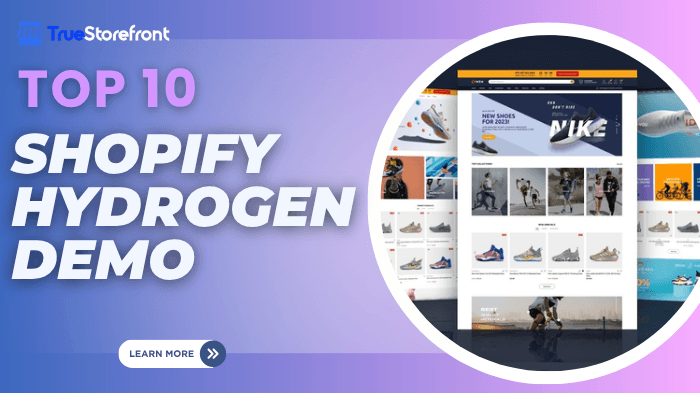In 2025, ecommerce businesses are pushing boundaries to deliver faster, richer, and more customizable experiences for their customers. One of the key technologies driving this shift is Shopify Hydrogen, a React-based framework for building headless commerce storefronts. With Hydrogen, brands gain the power to break free from the limitations of traditional themes and craft highly unique online shopping experiences.
As Shopify continues to promote headless commerce through Hydrogen and its companion hosting solution, Oxygen, more merchants are turning to Hydrogen themes to optimize performance, improve SEO, and meet the expectations of modern consumers. In this guide, we explore the top 10 Shopify Hydrogen themes and storefronts in 2025, along with key features, demos, comparisons, and expert tips on choosing the best one for your business.
I. Understanding Shopify Hydrogen
Shopify Hydrogen is a React-based framework designed to help Shopify Plus and enterprise merchants build fast, custom storefronts without losing access to Shopify’s core features. Before Hydrogen, merchants had to choose between limited default themes or complex third-party solutions. Hydrogen solves this by combining modern technologies like React Server Components, Vite, and Tailwind CSS—offering performance, scalability, and flexibility out of the box.
Since its 2021 release, Hydrogen has been widely adopted by brands like Allbirds and Chubbies, and it continues to evolve, with over 70,000 monthly downloads and new features launched in Shopify Winter 2024
1.1 Key Features of Shopify Hydrogen
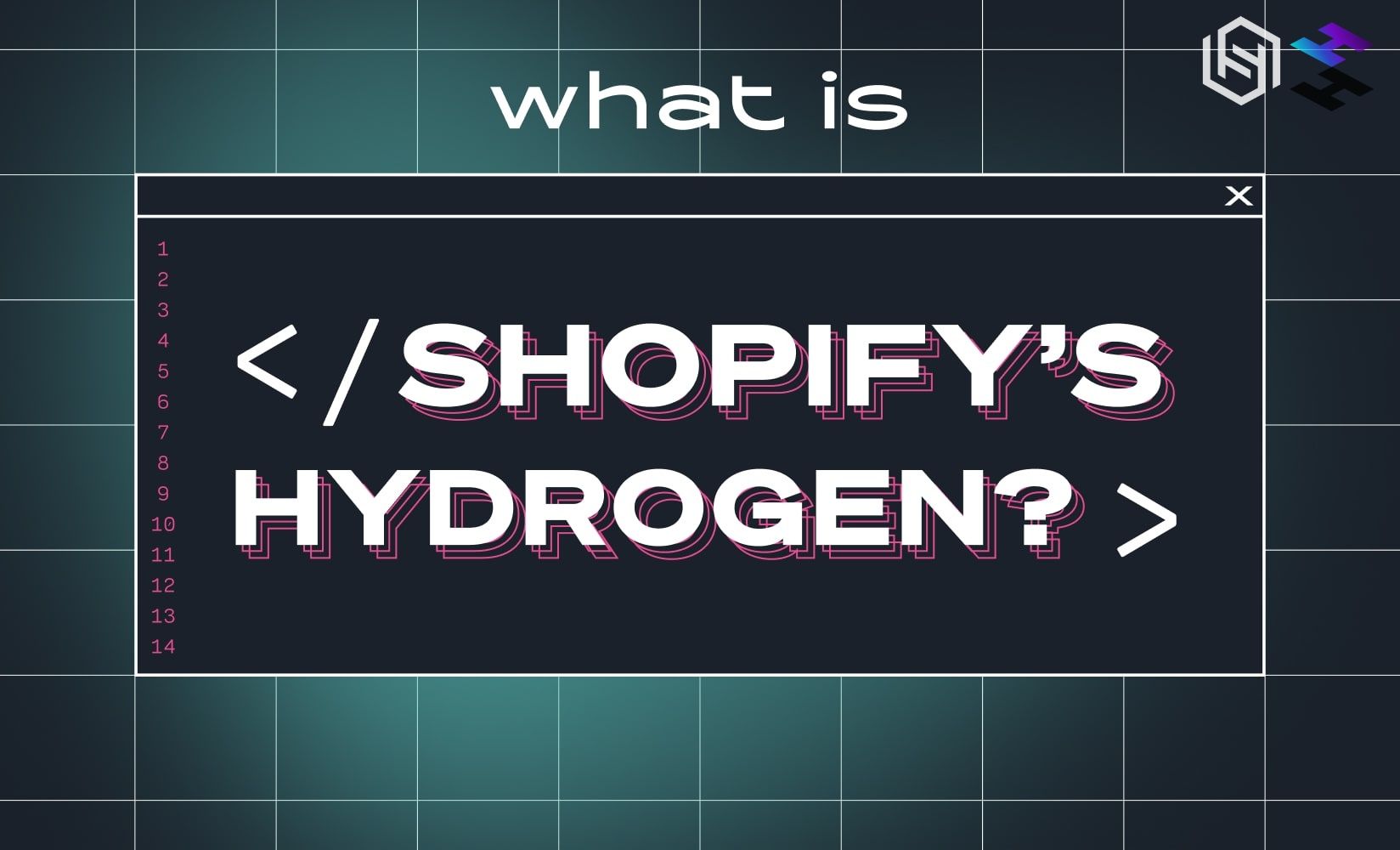 Hydrogen is built on cutting-edge web technologies and includes a comprehensive suite of features designed to enhance storefront performance, developer productivity, and user experience:
. Here are the core features that make Hydrogen a game-changer in 2025:
Hydrogen is built on cutting-edge web technologies and includes a comprehensive suite of features designed to enhance storefront performance, developer productivity, and user experience:
. Here are the core features that make Hydrogen a game-changer in 2025:
-
Server-Side Rendering (SSR) & Streaming: Pages are rendered on the server and streamed to the client, ensuring faster initial load times and enhanced SEO, especially for dynamic content.
-
Built on React & Vite: Hydrogen is developed using React and Vite, offering a modern toolchain for building fast, scalable applications with live preview and hot module replacement.
-
Tailwind CSS Integration: Out-of-the-box support for Tailwind CSS provides a utility-first approach to styling, making it easier to develop responsive and maintainable designs.
-
File-Based Routing: Organize pages and routes effortlessly using a simple file structure that aligns with best practices in modern frontend development.
-
Component-Based Architecture: Build reusable UI components such as product cards, navigation menus, carousels, and more, enabling faster development cycles.
-
Integrated Shopify API Access: Seamlessly connect to Shopify’s Storefront API for real-time access to products, collections, checkout data, and customer accounts.
-
Optimized for Shopify Oxygen Hosting: Deploy instantly on Shopify’s global edge network, benefiting from performance boosts and minimized latency.
1.2 Why Use Hydrogen Themes in 2025?
The demand for personalized, high-performance digital experiences is higher than ever. Hydrogen themes empower merchants to:
-
Deliver Unparalleled Speed: Thanks to SSR and streaming, Hydrogen storefronts load incredibly fast, which directly impacts user engagement, conversion rates, and SEO rankings.
-
Fully Customize UI/UX: Move beyond rigid templates with total control over layout, style, and behavior to match your brand vision perfectly.
-
Future-Proof Your Store: Hydrogen is built on React and Vite, two technologies widely supported and continuously updated, ensuring long-term viability.
-
Optimize for SEO & Accessibility: Hydrogen gives developers full control over metadata, schema, and semantic structure, essential for search visibility and WCAG compliance.
-
Integrate with Any CMS or Service: Whether using Sanity, Contentful, Prismic, or any third-party system, Hydrogen's headless nature allows seamless integration.
-
Enhance Developer Productivity: With reusable components, fast refresh, and modular design, developers can iterate quickly and ship updates faster.
III. Top 10 Best Shopify Hydrogen Themes & Storefronts
Shopify Hydrogen offers an innovative, React-based framework for building fast, customizable, and scalable headless e-commerce storefronts. Below is a comprehensive review of the top 10 Hydrogen themes and storefronts, highlighting their unique strengths and providing links to demos and resources.
1. Owen by TrueStorefront
The Shopify Hydrogen demo store is a cutting-edge, production-ready Shopify Hydrogen template developed by the TrueStorefront team — a specialized agency at the forefront of headless commerce innovation. It prioritizes conversion optimization, rich product discovery, and seamless integration with advanced CMS and search tools.
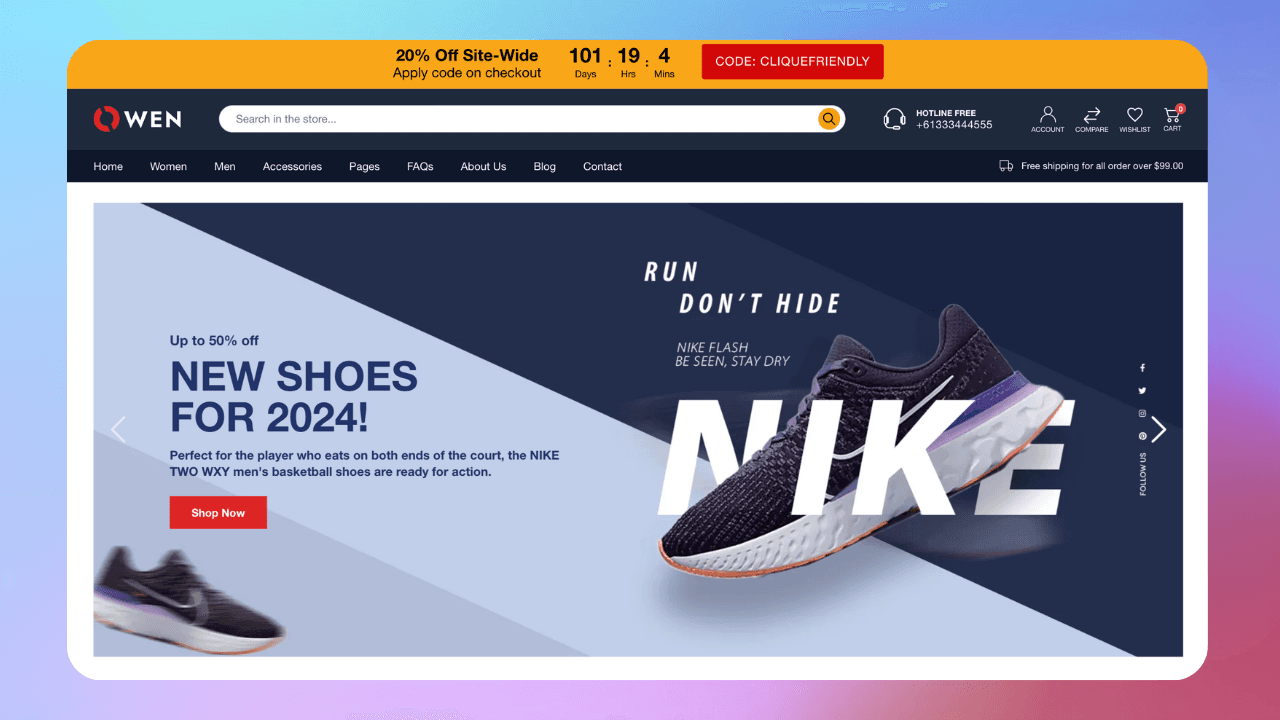
Key Features:
- Product Comparison modules
- Shoppable Images and Product Bundling
- Customer Reviews with integrated moderation
- Multi-language and multi-currency capabilities
- Fully SEO-optimized with server-side rendering
- Mobile-first responsive design for flawless UX on all devices
Technical Integrations:
- Supports Sanity and Strapi as headless CMS options
- Integrates Algolia for fast and relevant e-commerce search
- Hosted on Shopify Oxygen for optimized performance
Use Case: Best suited for brands requiring sophisticated commerce features and internationalization.
2. Shopify Official Demo on Stackblitz
This is Shopify’s official Hydrogen demo showcasing core framework features, demonstrating React Server Components, dynamic data fetching, and modern routing in Hydrogen.
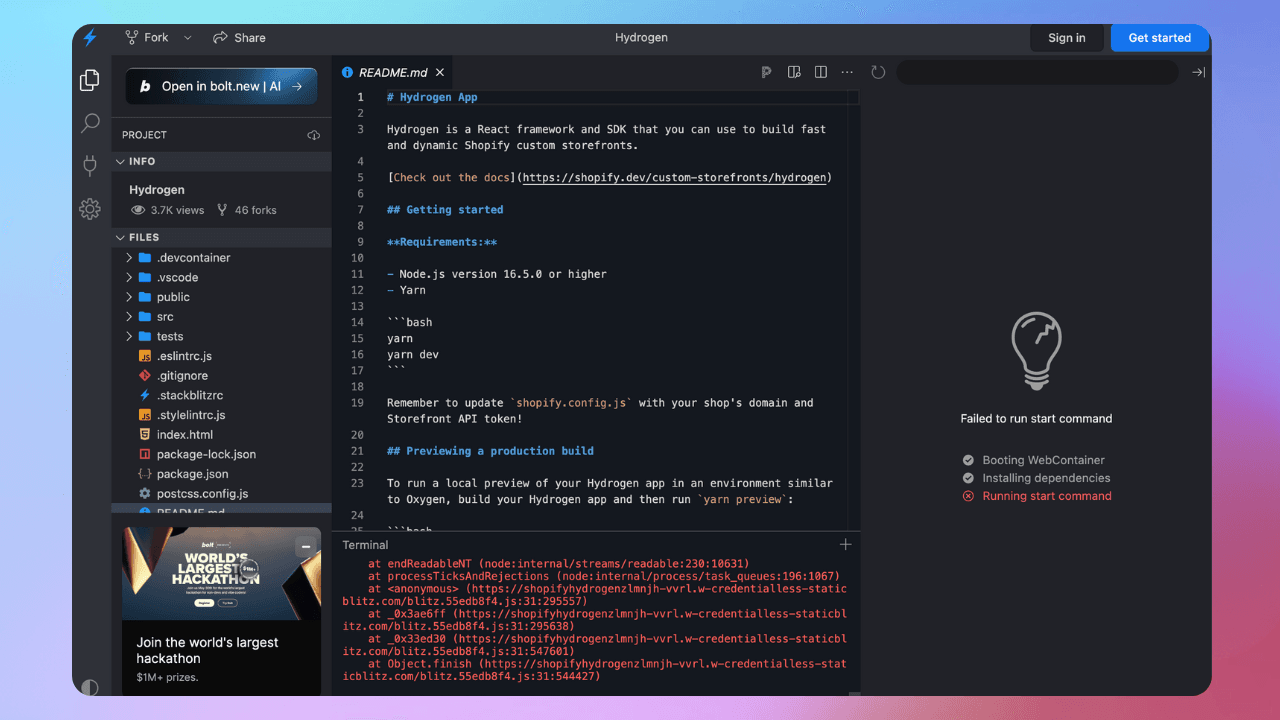
Key Features:
- Demonstrates best practices for Hydrogen development
- Modular, clean codebase ready for customization
- Illustrates integration of Shopify’s Storefront API
Technical Strengths: Serves as a clean, modular codebase showcasing best practices for Hydrogen development.
Use Case: Ideal for developers beginning Hydrogen projects or those seeking a solid boilerplate.
3. Pilot by Weaverse
Pilot is a Hydrogen theme developed by Weaverse, described as the “Dawn theme for Hydrogen.” It focuses on performance, accessibility, and design flexibility to create a smooth developer and shopper experience.
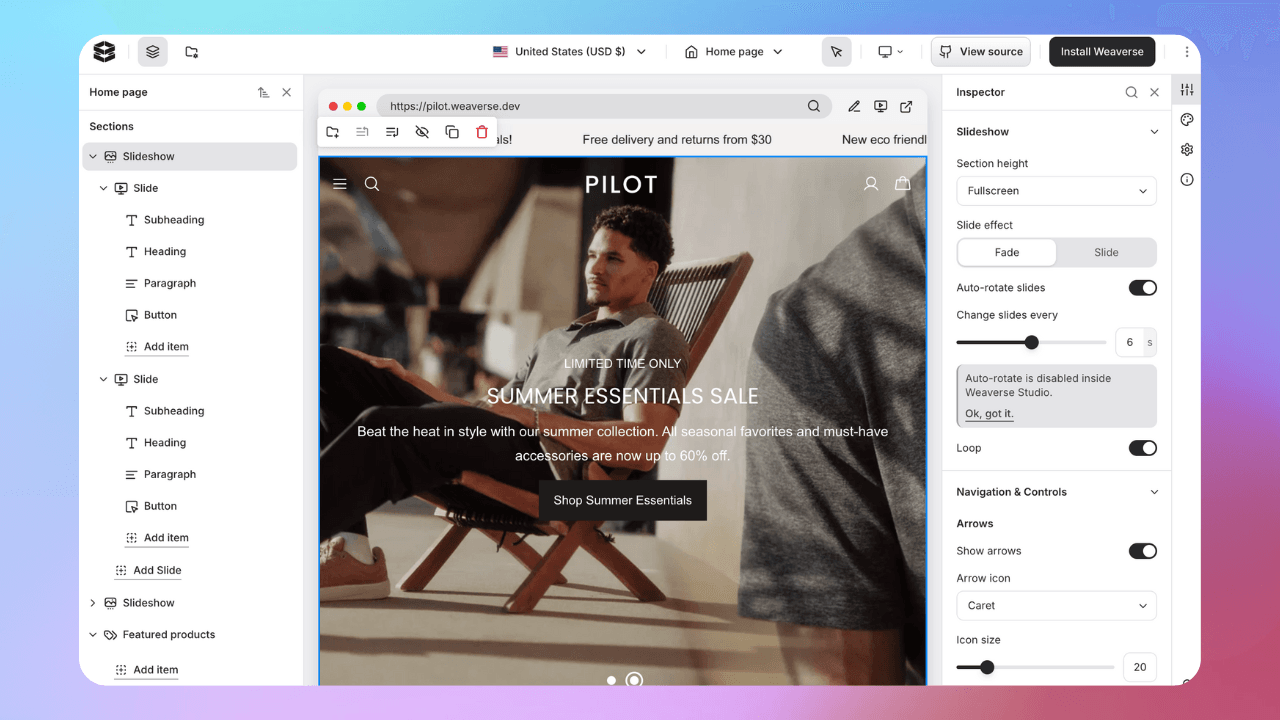 Key Features:
Key Features:
- Accessibility-first approach following Shopify’s standards
- High performance with minimal load times
- Modular components to customize UI/UX freely
- Fully documented for easy developer onboarding
Technical Strengths: Modular and flexible, enabling developers to customize layouts, components, and UI behavior easily.
Use Case: Perfect for agencies and developers wanting a scalable, accessible headless theme.
4. Shopify Supply
Shopify Supply adapts the familiar Supply theme into a Hydrogen-powered headless storefront, aimed at merchants with mid-to-large product catalogs.
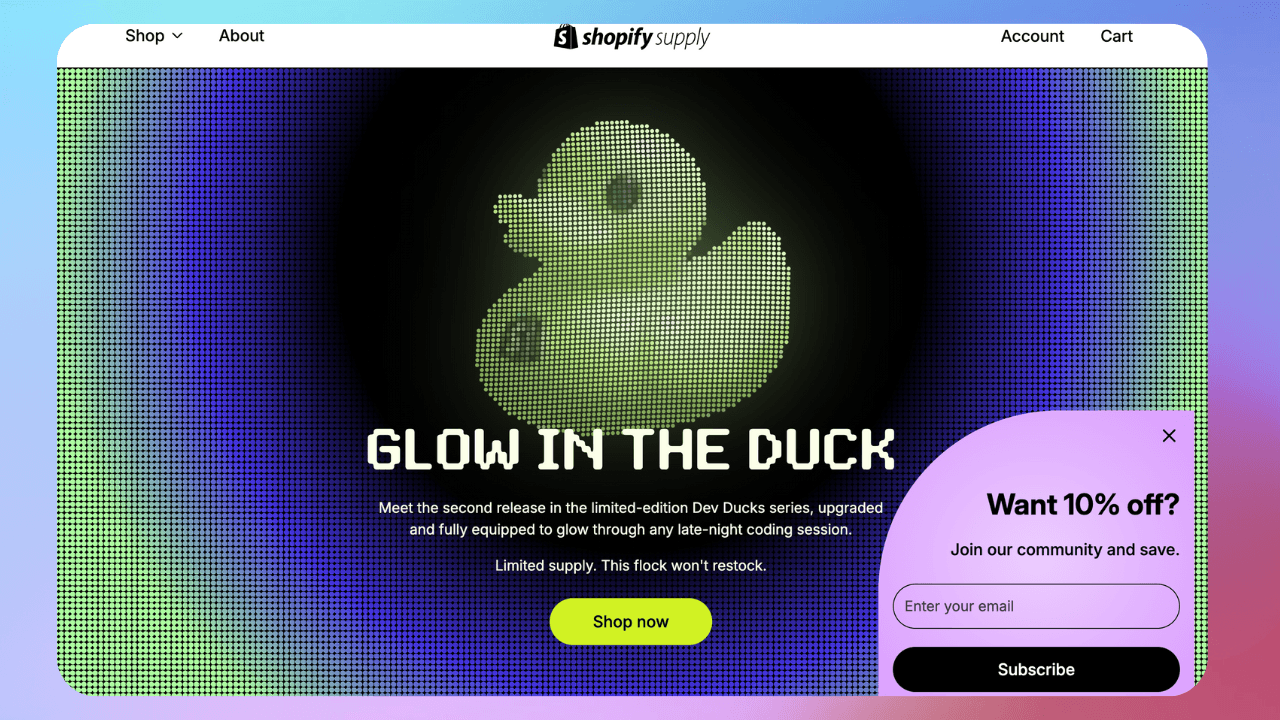 Key Features:
Key Features:
- Efficient category filtering and product listing
- Clean UI designed for easy navigation
- Optimized performance on React and server-side rendering
Technical Strengths: Designed to efficiently handle medium to large product catalogs without sacrificing user experience.
Use Case: Merchants looking for a reliable Hydrogen-based version of a classic Shopify theme.
5. Akva Demo Store
Akva demonstrates the integration of Shopify Hydrogen with Sanity as a headless CMS, enabling rich, structured content alongside product data.
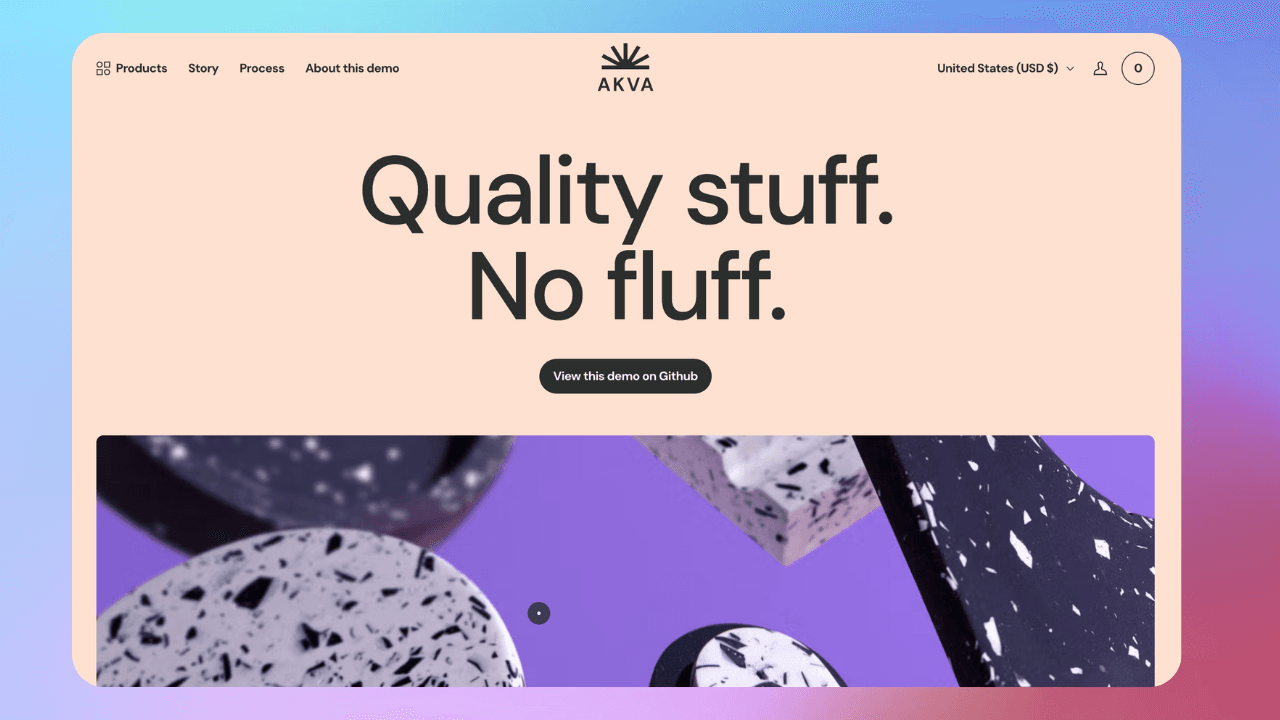 Key Features:
Key Features:
- Synchronizes Shopify product and collection data with Sanity Connect
- CMS-driven rich content integration in product descriptions and collections
- Open-source codebase for developer customization
Technical Strengths: Demonstrates how structured content and CMS flexibility can elevate user experience.
Use Case: Brands requiring strong editorial control over commerce content.
6. Manors Golf
Manors Golf combines Hydrogen with Oxygen hosting and Sanity CMS to deliver a high-performance, content-rich golf equipment storefront.
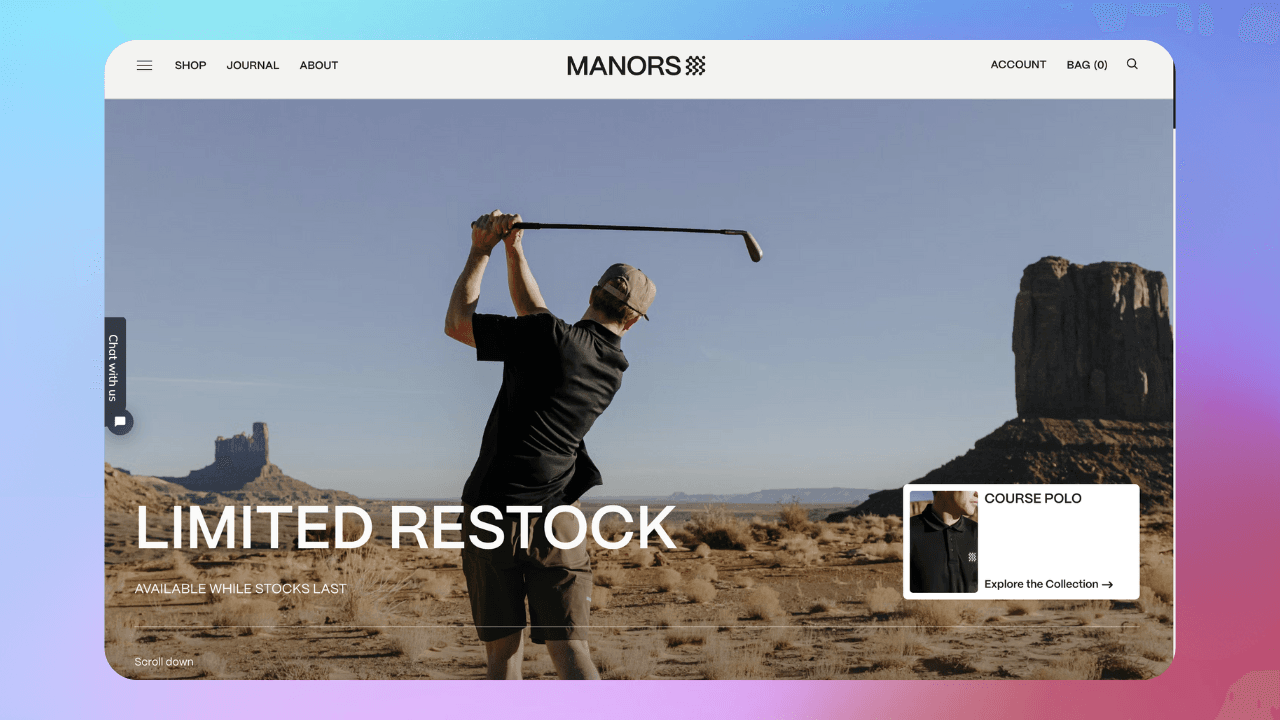 Key Features:
Key Features:
- Engaging product bundles and lifestyle content
- CMS-powered blog integration for storytelling
- Responsive and fast on mobile and desktop
Technical Strengths: Combines powerful CMS-driven storytelling with seamless product discovery.
Use Case: Specialty sports and outdoor brands blending commerce with content marketing.
7. Chubbies
Chubbies a well-known apparel brand, uses Hydrogen to build a performant and scalable storefront supporting extensive product variants.
 Key Features:
Key Features:
- Handles hundreds of product variants without performance loss
- Interactive UI tailored to apparel shopping needs
- Developed by Form Factory, a leading Shopify agency
Technical Strengths: Built by Form Factory, a leading Shopify agency, leveraging Hydrogen’s React components for speed and flexibility.
Use Case: Fashion brands with large catalogs requiring smooth browsing.
8. Isle
Isle, another Form Factory project, targets eco-conscious brands with a Hydrogen storefront that balances rich storytelling and user-friendly management.
 Key Features:
Key Features:
- Non-technical content updates enabled through CMS integration
- Rich customer reviews and interactive product showcases
- Emphasizes sustainability messaging
Technical Strengths: Allows non-technical users to manage content efficiently while maintaining high performance.
Use Case: Lifestyle and artisanal brands focused on sustainability and community.
9. Denim Tears
Denim Tears leverages Hydrogen’s advanced development tools to create a story-rich, multimedia-heavy storefront that doesn’t compromise on speed.
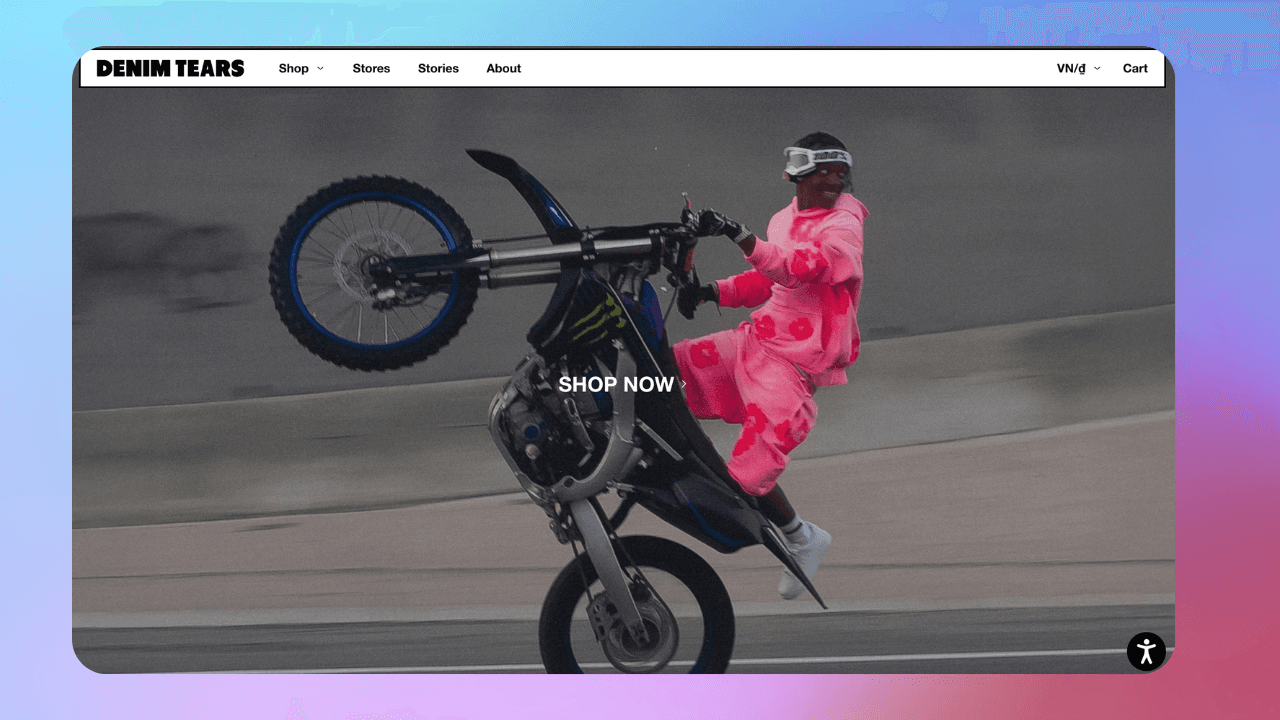 Key Features:
Key Features:
- Hot reloading for faster development cycles
- Server-side rendering with React Suspense and streaming
- Immersive content including videos and artist collaborations
Technical Strengths: Leveraging Hydrogen’s hot reloading and streaming server-side rendering to accelerate development and optimize UX.
Use Case: Brands with strong narrative identities requiring rich media.
10. Baboon to the Moon
Baboon to the Moon moved from a legacy Shopify theme to Hydrogen, achieving enhanced modularity, performance, and feature-rich commerce capabilities.
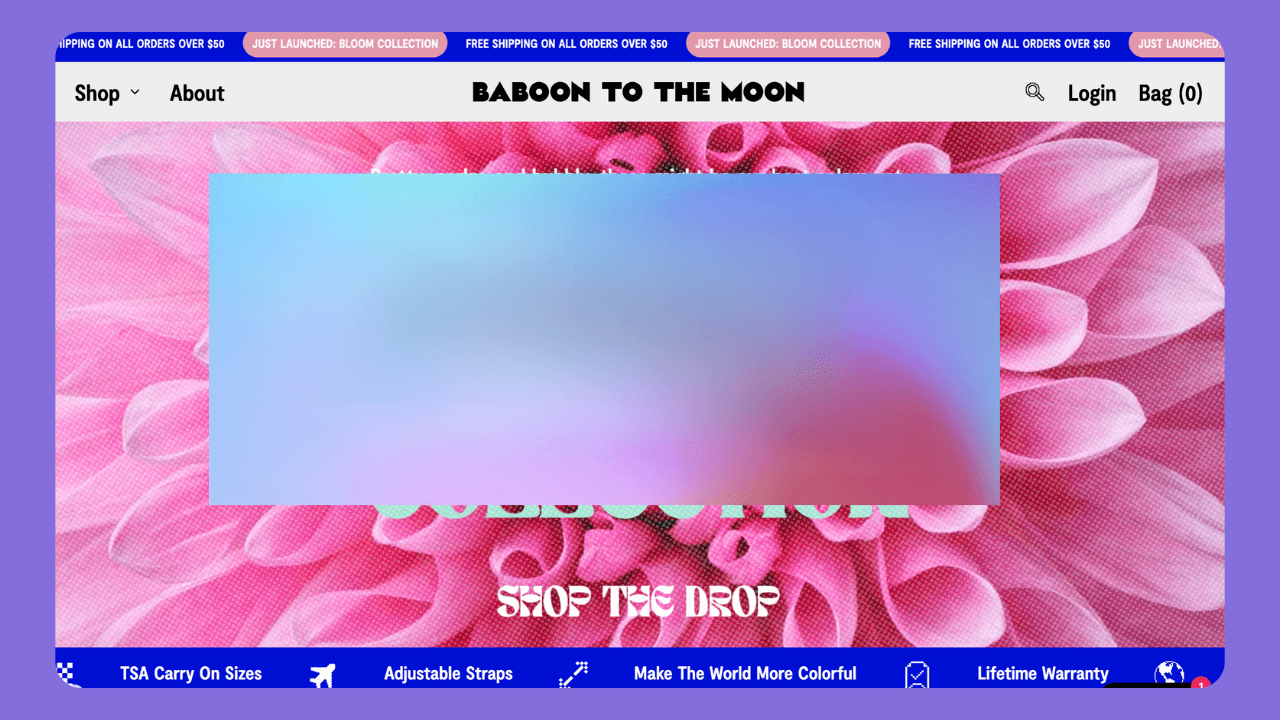
Key Features:
- Advanced product variant and bundle management
- Dynamic upselling and scheduled content releases
- CDN-optimized media delivery via Shopify Oxygen
Technical Strengths: Utilizes Shopify’s Oxygen hosting, CDN for optimized media delivery, and Sanity for content management.
Use Case: Emerging lifestyle brands needing flexible, modular storefronts.
IV. How to choose the right Shopify Hydrogen Theme?
-
Understand Your Brand’s Needs Consider your industry, target audience, and brand personality. A luxury jewelry brand needs a vastly different storefront experience than a tech gadget startup.
-
Evaluate Required Features List must-have features such as advanced filtering, product comparison, animations, or editorial content. Match these with theme capabilities.
-
Consider Customization and Developer Resources Hydrogen themes vary in complexity. Some offer simple starter templates, while others require advanced React knowledge. Assess your in-house capabilities or developer support.
-
Prioritize Performance Speed and SEO performance directly impact sales. Opt for themes that leverage server-side rendering and optimized asset delivery.
-
Review Real-World Examples Explore demo stores and live implementations to visualize how themes perform in practice.
-
Plan for Scalability Choose themes that can evolve with your business, accommodating new features and increasing traffic without performance degradation.
Summary
These Hydrogen themes and storefronts illustrate the breadth and depth of Shopify’s new headless commerce ecosystem. From foundational demos like Shopify’s official Stackblitz repo to fully developed commercial themes like Owen, merchants and developers have a rich selection of solutions tailored for performance, accessibility, and advanced commerce features.
Explore the demos and source code to find the best fit for your business needs and technical capabilities.
